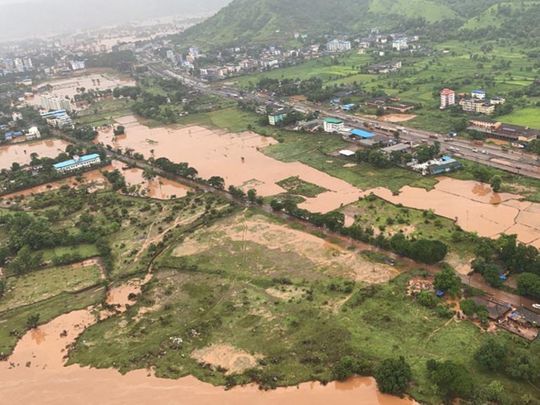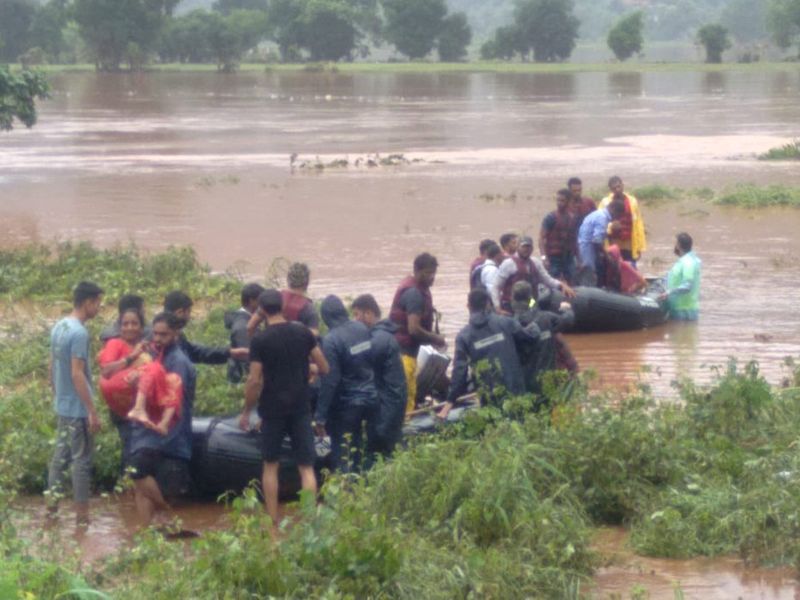
New Delhi: At least 65 people have died in the western Indian state of Maharashtra after torrential monsoon rains caused landslides and flooding that submerged low lying areas and cut off hundreds of villages, authorities said on Friday.
Rivers in Maharashtra were flooded after authorities released water from dams made full after many parts on the west coast received more than 200mm of rain in 24 hours and some parts received as high as 594mm rainfall.
At least four people died after a building collapsed in the financial capital Mumbai, and another 61 were killed in four landslides in other parts of Maharashtra, state government officials said.
“Rescue operations are going on at various places in Satara, Raigad and Ratnagiri. Due to heavy rainfall and flooded rivers, we are struggling to move rescue machinery quickly,” said a state government official, who declined to be named.

Several dozen people were feared to have been trapped at landslides in Satara and Raigad districts, the official said. “At least 35 to 40 people are still trapped, we are trying to rescue them,” a local official in Raigad said,
In coastal districts, the Indian navy and army have been helping in rescue operation, Maharashtra chief minister Uddhav Thackeray said.
Thousands of trucks were stuck on a national highway linking Mumbai with the southern technology hub of Bengaluru, with the road submerged in some places, another Maharashtra government official said.
Hundreds of villages and dozens of towns in the affected areas of Maharashtra were without electricity and drinking water, he said.
In neighbouring southern states of Karnataka and Telangana some rivers are overflowing, and authorities are monitoring the situation, government officials said. Seasonal monsoon rains from June to September cause deaths and mass displacement across South Asia every year but they also deliver more than 70% of India’s rainfall and are crucial for farmers.
At least 34 people were killed after several homes were crushed by a collapsed wall and a landslide triggered in Mumbai, capital on Maharashtra, last weekend.
Rainwater also inundated a water purification complex, disrupting supply “in most of the parts of Mumbai”, a megacity of 20 million people, civic authorities said.
Last month, 12 people were killed when a building collapsed in a Mumbai slum.
And last September, 39 people died when a three-storey apartment block collapsed in Bhiwandi near the financial capital.
Climate change is making India’s monsoons stronger, according to a report from the Potsdam Institute for Climate Impact Research (PIK) published in April.
The report warned of potentially severe consequences for food, farming and the economy affecting nearly a fifth of the world’s population.
“Since Indian society is overall affected by the monsoon in a very strong way, stronger variability produces problems for agriculture, but also for the organisation of public life,” said Anders Levermann from PIK and Columbia University.
Last year, five of the most costly extreme weather events in the world were related to Asia’s unusually rainy monsoon, according to a tally by the charity Christian Aid.
In 2013, some 6,000 people died when flash floods and landslides swept away entire villages in the Indian state of Uttarakhand as rivers swollen by monsoon rains overflowed.












